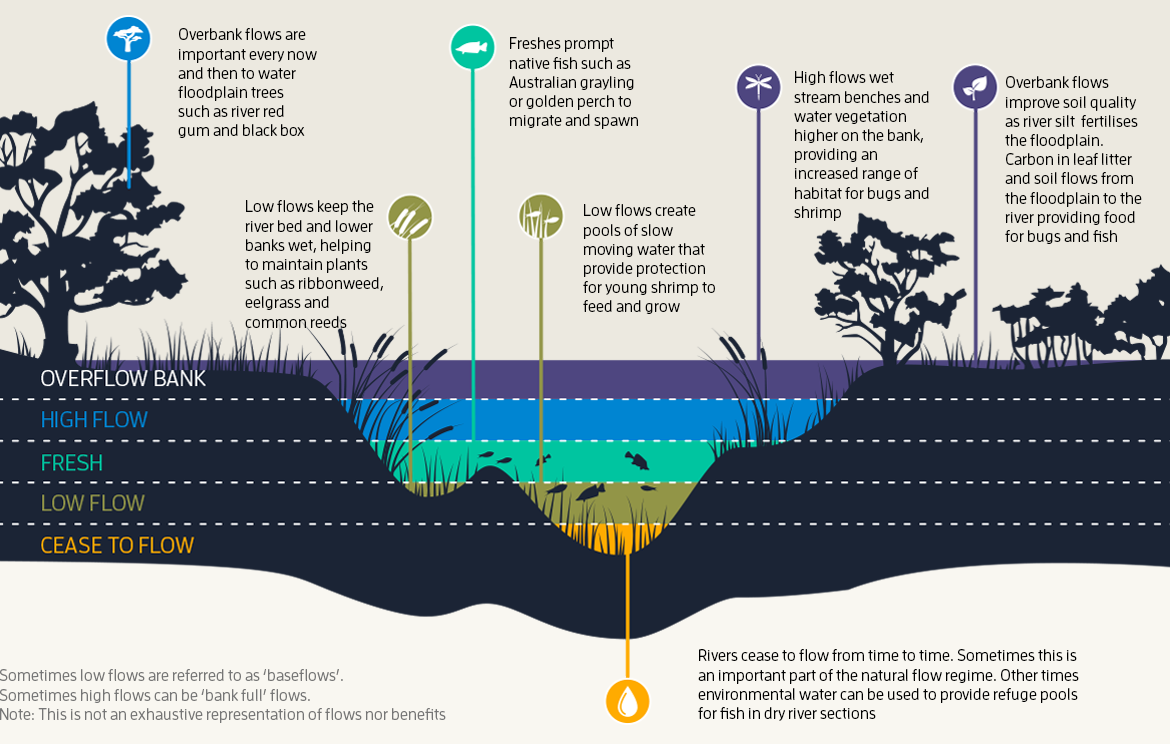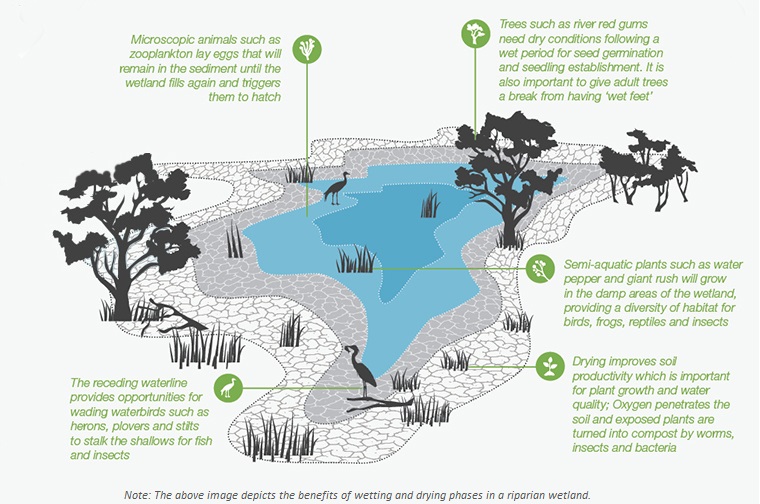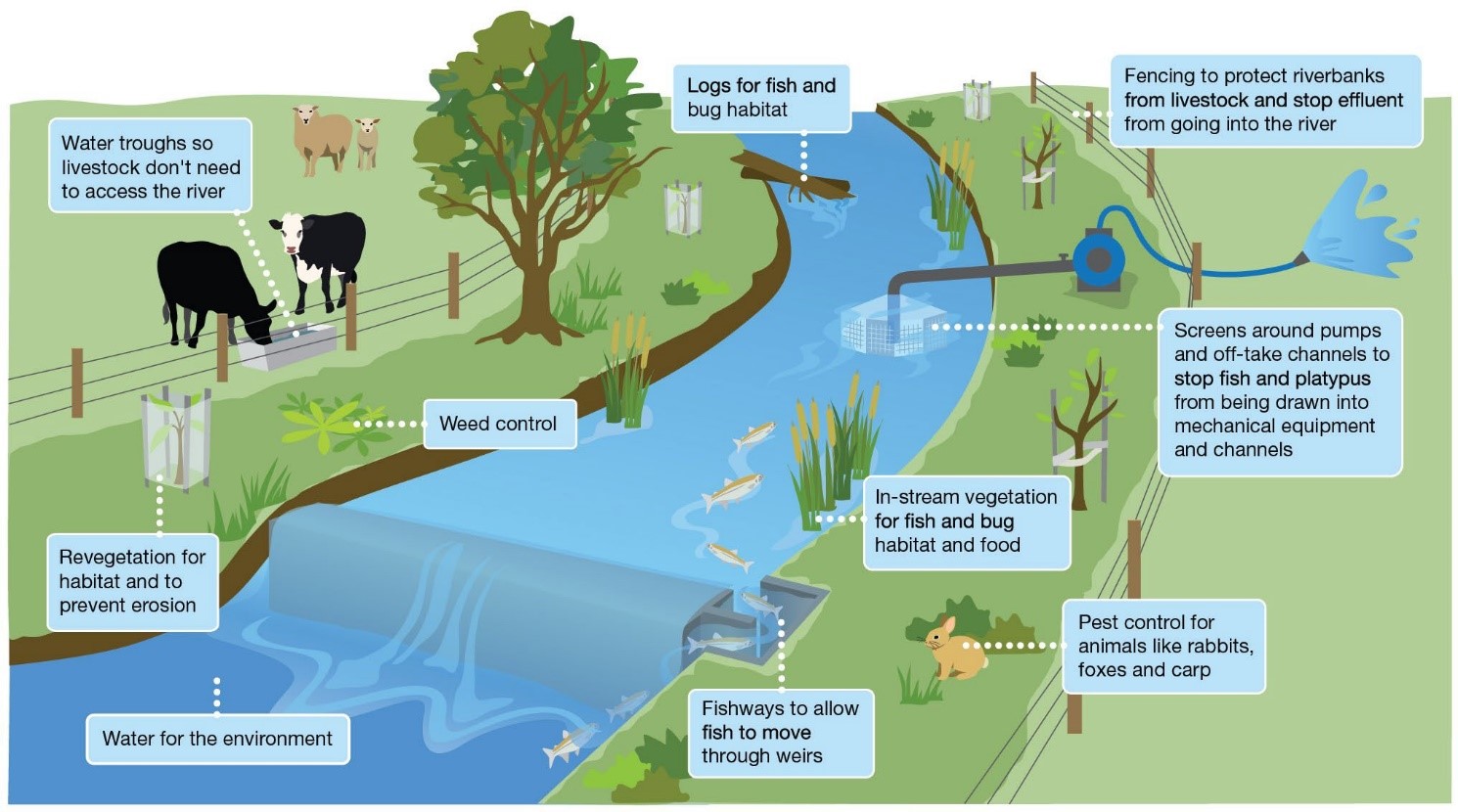On this page:
Environmental watering maintains, and where possible, improves the health of rivers and wetlands to benefit the plants and animals that depend on them. It delivers water to mimic some of the flows in rivers and the wetting and drying patterns in wetlands that would have happened naturally before rivers were regulated.
The benefits of different environmental flows in rivers
Rivers thrive with a combination of different environmental flows, with each type of flow achieving different purposes at different times. Flow variability is one of the keys to healthy rivers. The illustration here demonstrates why: different flow types – flowing at different heights and speeds – provide diverse benefits for plants and animals in a waterway.
Importance of flows
Rivers need a variety of different water heights, created by flows, throughout the year to be healthy.
How much water for the environment can be delivered is limited in modified river systems where water is held upstream in storage dams, and is used for households, industry and farms.
Delivering environmental flows may be limited by:
- how much water for the environment is available
- structures (such as dams, weirs, levees and low-level bridges) physically limiting where water can travel
- overbank flows posing a flooding risk to private property.
- water for the environment will only be delivered on private land with permission from landowners.
Water for the environment managers aim to achieve the best environmental outcomes possible within these limits.
Environmental watering improves rivers and wetlands
Rivers
In rivers water for the environment often seeks to mimic some of the flows that would have happened naturally, before dams, weirs and channels.
This is vital for the ecological health of rivers.
Water for the environment managers may look to deliver small and medium-sized river flows critical to the life cycles of native plants and animals. These flows can move sediment and nutrients through rivers, connect habitats, trigger breeding events and improve water quality.
Releasing the right amount of water into rivers and wetlands at the right time of year, for the right length of time, supports native plants and animals. For example, fish such as the threatened Australian grayling rely on an increase in river flow in autumn to signal them to migrate downstream to breed.
Wetlands
Many wetlands are now artificially disconnected or are unnaturally permanently connected to rivers or channels. This means that some wetlands don't get enough water, and others get too much and rarely get to dry out a bit like they would naturally.
Water for the environment can aim to mimic more natural wetland wet and dry cycles that plants and animals depend on. This can include environmental flows being delivered using infrastructure such as pumps, channels and regulators (devices that control water flow). Watering with works aims to limit decline by maintaining environmental condition between less frequent connecting overbank events.
Naturally, some wetlands would always have been wet, some mostly wet with some dry phases, and some mostly dry with wet phases. The frequency, extent and duration of the wet or dry phases varies from wetland to wetland, depending on where they are on the floodplain.
By mimicking the wetting and drying phases that happened naturally water for the environment managers aim to provide the variability that is one of the keys to healthy wetlands.
Like rivers, the aim of environmental watering is to protect plants and animals and generally improve the health of modified wetland.
Complementary waterway management actions
It takes more than water for waterways to be healthy. Pest management, restricting stock access, revegetation, erosion control, returning logs to rivers for fish and bug habitat, and installing fishways to allow fish to pass through dams and weirs all complement environmental watering.
Page last updated: 30/04/25



